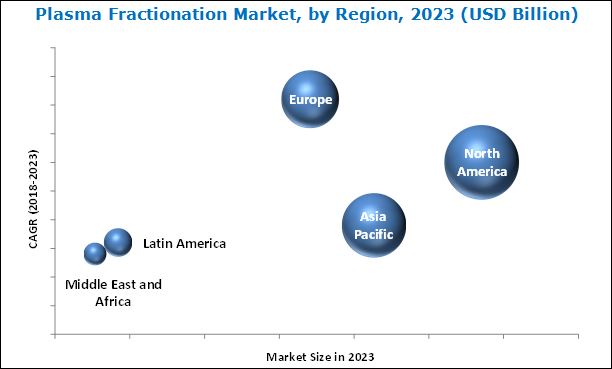The global plasma fractionation market is projected to reach USD 29.50 Billion by 2023 from USD 21.23 Billion in 2018, at a CAGR of 6.8%. Market growth can be attributed to factors such as the growing use of immunoglobulins in various therapeutic areas, rising geriatric population across the globe, growing prevalence of respiratory diseases and AATD driving the uptake of alpha-1-antitrypsin, and increase in plasma collection. However, the high cost & limited reimbursement policies and emergence of recombinant alternatives can hinder the growth of this market.
Geographically, the global plasma fractionation market is segmented into North America, Europe, Asia Pacific, and Latin America and the Middle East and Africa. In 2017, North America accounted for the largest share of this market. North America’s prominence in this market is mainly attributed to the increasing use of immunoglobulins in neurological diseases and increasing use of prophylaxis treatments for diagnosed patients. In addition, the rising number of registered hemophilic patients is also propelling the growth of this market.

CSL (Australia), Grifols (Spain), Shire (Ireland), and Octapharma (Switzerland) dominated the global plasma fractionation market. Some of the other players competing in this market are LFB (France), Kedrion (Italy), Biotest (Germany), Sanquin (Netherlands), China Biologic Product, Bio Product Laboratory (UK), Japan Blood Products Organization, Green Cross Corporation (South Korea), Shanghai RAAS Blood Products (China), Beijing Tiantan Biological Products (China), and Bharat Serums and Vaccines (India).
Know More:
https://www.marketsandmarkets.com/Market-Reports/plasma-fractionation-market-93798284.html